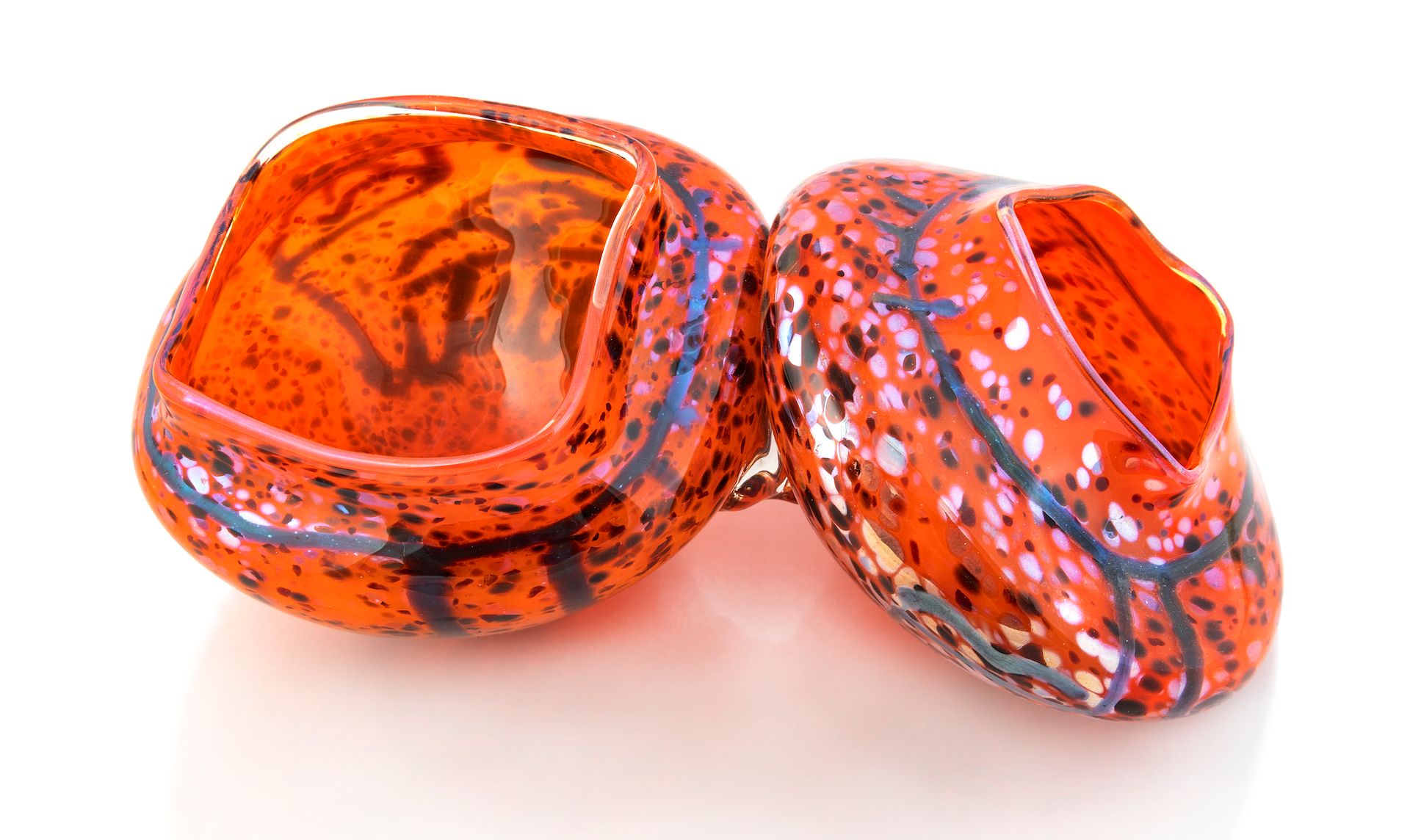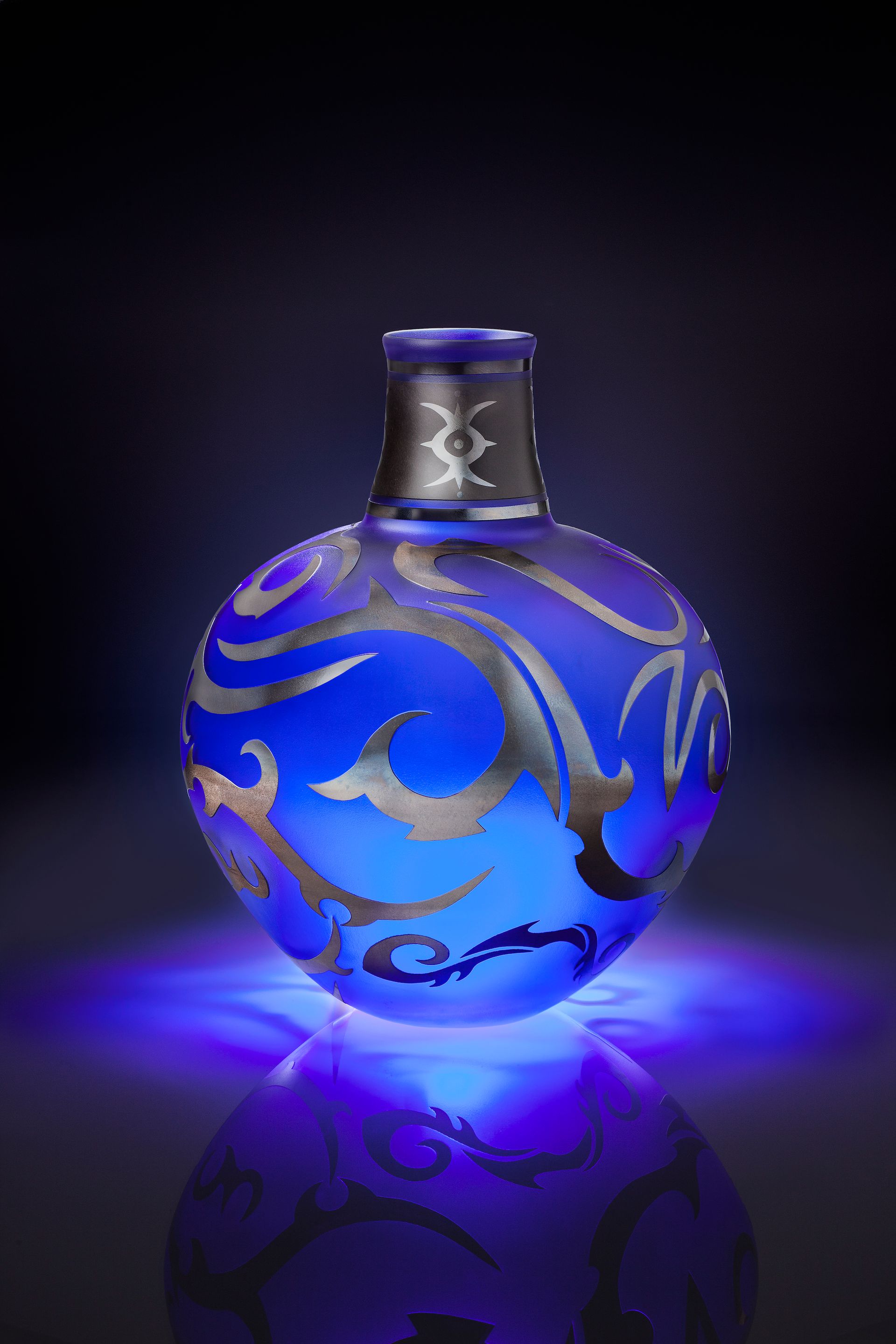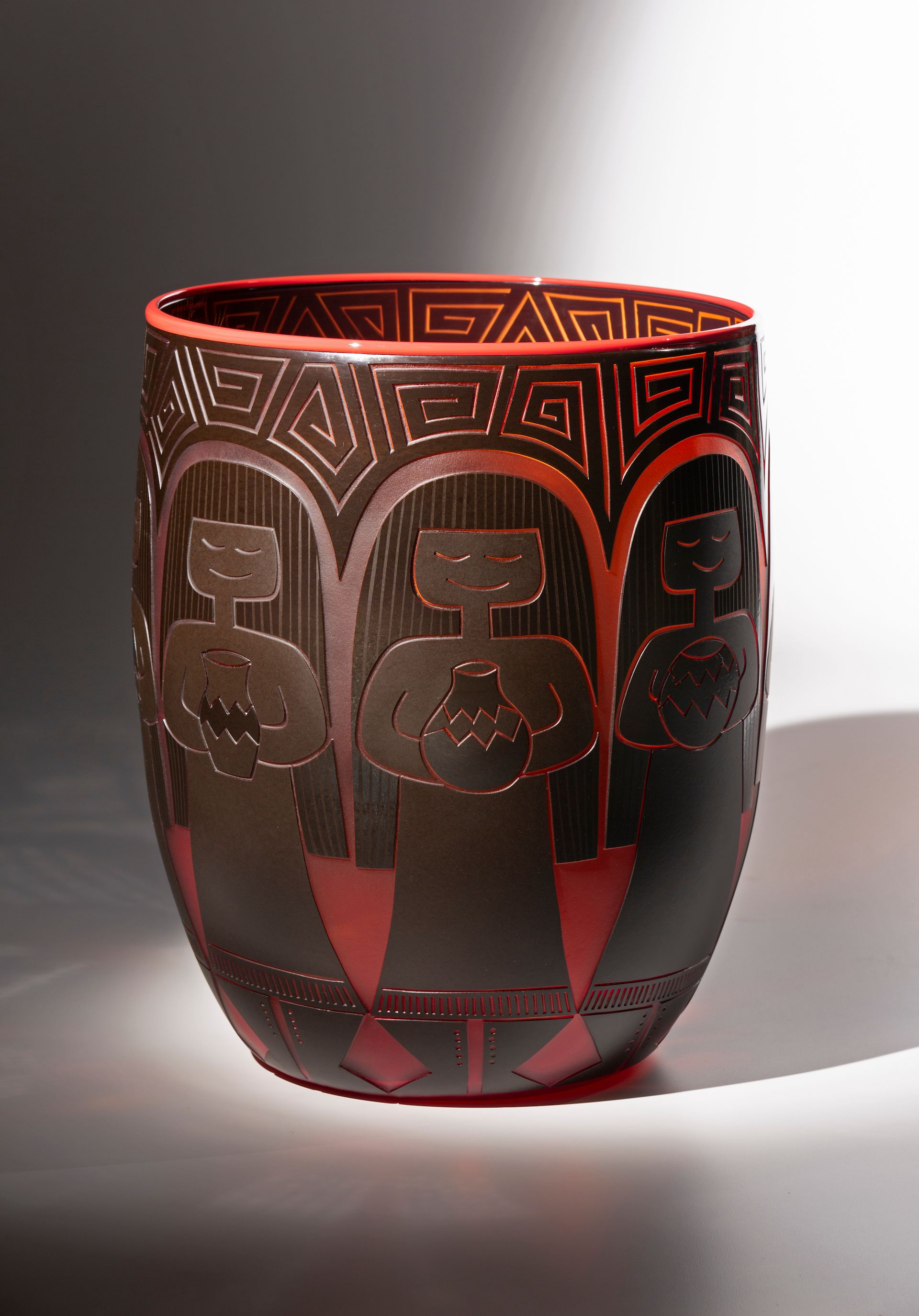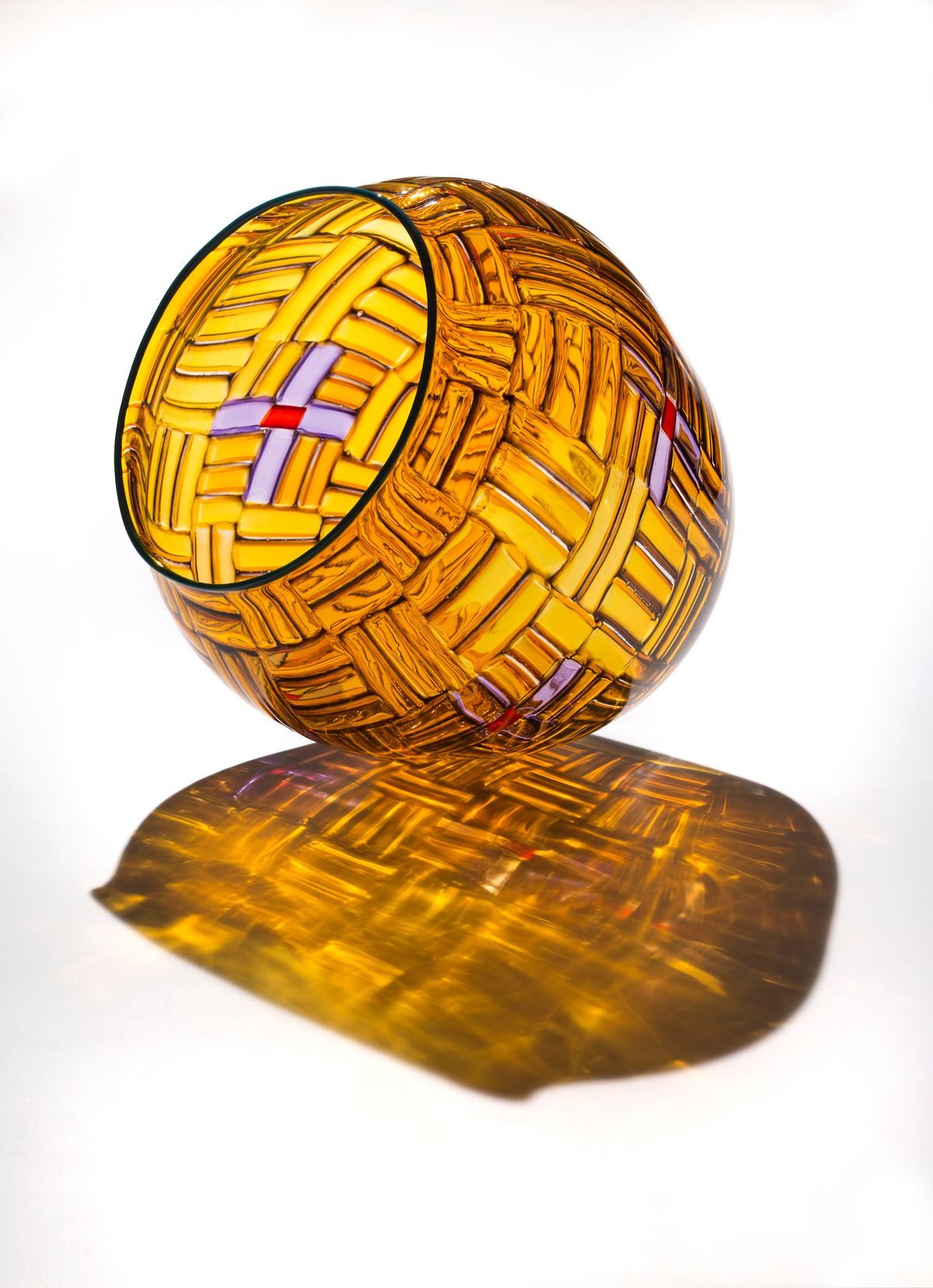Glass, with its inherent technical and artistic properties, has proved to be a compelling medium for Indigenous artists to share traditional stories and designs and explore contemporary issues. The pliable, shape-shifting material is the focus of Clearly Indigenous: Native Visions Reimagined in Glass (until 16 June), an exhibition at the Museum of Indian Arts and Culture in Santa Fe, New Mexico that showcases works by 33 Indigenous artists, as well as those of renowned glass artist Dale Chihuly.
The show features the work of 29 artists from 26 tribes and nations in the US and Canada as well as four Indigenous artists from the Pacific Rim. More than 130 contemporary glass art pieces are on display including vessels, boxes, totems, animals, human figures, mosaics, masks and other unique objects that honour tradition but also explore modern challenges.
“Native iconography has a history and a tradition and a continuity in design, but contemporary artists, possibly to a much greater extent than earlier Native artists, feel free to use their own creative sense,” says Letitia Chambers, the former chief executive of the Heard Museum in Phoenix, who co-curated the exhibition with Cathy Short. “It is not simply copying patterns of the past, but building their own artistic sensibilities into their pieces and into the objects that they make.”

Tony Jojola, Two Together, 1995. Photo: Kitty Leaken. Photo courtesy of the Museum of Indian Arts and Culture.
Indigenous artists have been burdened with false standards of “authenticity” since the colonial period. The late Lloyd Kiva New, founder of the Institute of American Indian Arts (also in Santa Fe), challenged these beliefs.
“What Lloyd New said was that if it is a Native artist then it is Native art,” Chambers says. “An artist must be free to be creative or one loses the artist’s sensibility.”
It was New who planted the seed for this exhibition years ago when he explained how the studio glass art movement and the contemporary Native art movement intersected at the IAIA in 1974. Dale Chihuly set up the institute’s first hot shop and taught glass there for a semester. Later he founded a glass school in Washington state, sparking a movement with strongholds in the Southwest and Pacific Northwest.
Chambers first recounted the story in a book that became the exhibition catalogue. “As I was working on the book, I realised that there was a larger story that could be told with the exhibit and that was how the Native students continued to use their iconography and designs—historical and traditional designs—as well as contemporary Native designs in their glass art,” she says.
The exhibition is organised by subject matter including sections titled “The Sky Above”, “Ancestors’ Voices” and “Bridging Two Worlds”, which reflects on the dichotomy of life in Native and mainstream cultures.

Robert "Spooner" Marcus, Cobalt Cosmic Blue, around 2010 Photo: Wendy McEahern Photography. Courtesy Robert "Spooner" Marcus.
The vessels and baskets present interesting opportunities for reinterpretation in glass, Chambers says, with Pueblo artists tending to make glass vessels reminiscent of clay pots, and Northwest coast artists drawing from their traditions of textured, woven or wooden materials. Striking examples include Aunt Fran's Star Basket (2021) by Dan Friday (Lummi), Two Together (1995) by Tony Jojola (Isleta Pueblo)—one of the earliest Native glass blowers—and Cobalt Cosmic Blue (2010) by Robert "Spooner" Marcus (Ohkay Owingeh). Seventh-generation master weaver Ho-Wan-Ut “Haila” Old Peter (Skokomish and Chehalis) works woven materials into glass.
The rise of the Native glass art movement may have as much to do with the artistic properties of the medium as it does with its technical demands. Glass work, and glass-blowing in particular, is a team effort with several artists working in support of a lead.
“I suspect that the fact that it is collaborative in nature did influence the Native interest in glass art because, of course, the Native societies are very collaborative and community-oriented,” Chambers says.
Glass art is a multistage process with many opportunities for artistic collaboration. Tlingit artist Preston Singletary, a widely acclaimed glass sculptor, collaborated on several projects in the exhibition, including Yellow Butterfly Cylinder (2005) by Tammy Garcia (Santa Clara Pueblo), that were modeled after vessels found on archaeological digs and discovered to have chocolate residues.

Raven Skyriver, Adrift, 2015. Photo: KP Studios. Photo courtesy of Raven Skyriver, Stanwood, Washington.
“The more technical thing you are doing and the more hands on deck, then the better chance you have of getting it into the oven in one piece,” says Raven Skyriver (Tlingit) of the teamwork required for glass-making. Skyriver is known for technical mastery and exacting detail. His work is influenced by the natural beauty of his home on Lopez Island, Washington.
“I go photorealistic if I can. It’s a good technical challenge and it is my way of paying homage to it,” he says of the fish, marine mammals and other animals he sculpts. Skyriver’s Adrift (2015) brings visitors to the exhibition up close a profoundly beautiful but endangered sea turtle.
Glass, as an interpretive medium for culture and history, offers qualities other materials do not: transparency and translucency.
Jody Naranjo is a traditional Pueblo potter sourcing clay from the land, forming pots through the coil method, sanding them with riverbed stones, and firing them in pits of wood and cow manure. Her designs, which she describes as being done in a “happy, youthful, Pueblo style”, are carved into the pot’s surface.

Jody Naranjo and Preston Singletary, Pueblo Potters, 2018. Photo: Russell Johnson. Photo courtesy Blue Rain Gallery, Santa Fe, New Mexico.
She began collaborating with Singletary, etching her designs onto blown pieces, and it was “a whole new world”, she says. “Seeing something from the inside and seeing the light come through, it really changed my designs.”
The range of techniques, colours, textures and manipulations possible with glass creates an expansive palette for individual expression and exploring contemporary themes such as human rights, climate change and life in the modern world. Two examples include the kiln-fired glass mosaic Supreme Respect for the Two Spirits (2013) by Angela Babby (Lakota), and Charmed (2021), an installation of glass charms that play off ancient and modern imagery, light and shadow, by Joe Feddersen, a member of the Confederated Tribes of the Colville Reservation.
The show at the Museum of Indian Arts and Culture has drawn new audiences to Native art because of their interest in glass and received accolades from glass art aficionados. “Other glass artists, including Chihuly, who has seen the exhibit, have praised the artistry of the works,” Chambers says.
- Clearly Indigenous: Native Visions Reimagined in Glass, until 16 June, Museum of Indian Arts and Culture, Santa Fe, New Mexico.


